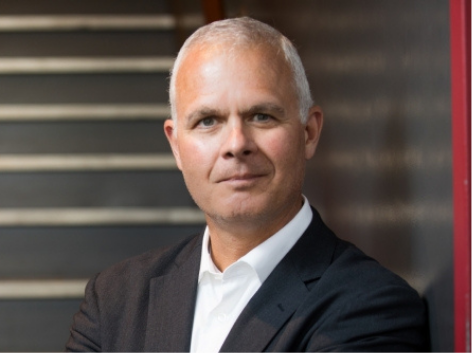Hyper-tribalism and the US domestic terrorism threat
After the January 6, 2021, breach of the US Capitol, the consequences of polarization, disinformation, and hyper-tribalism make domestic political violence the most pressing terrorism challenge facing US counterterrorism practitioners in the near term. Just as the United States absorbed the lessons from the September 11, 2001, attacks by foreign terrorists, it must now implement a strategic approach to an emerging domestic terrorism threat. Politicizing this threat risks the unintended consequences of needlessly alienating or even radicalizing more Americans. In the months and years ahead, counterterrorism practitioners and policy makers will need to confront domestic terrorism—which is fundamentally political, as is all terrorism by definition—but must do so with an approach that is fundamentally apolitical. The newly published National Strategy for Countering Domestic Terrorism is a good start, but only as a point of departure.
In the context of the January 6 breach of the Capitol, it is important to recall that during the early years of the Trump administration, the US counterterrorism enterprise did set the terms for framing a greater focus on domestic terrorism, including the strategic response in October 2018 to neo-Nazis who on August 12, 2017, crossed the line in Charlottesville, Virginia, from hateful rhetoric to political violence. In 2020, the administration designated the Russian Imperial Movement a terrorist organization—the first time a US administration had designated a white supremacist group. Counterterrorism practitioners certainly did not anticipate that a contested 2020 election, fueled by a dizzying array of conspiracy theories, would be an accelerant for domestic terrorism on the scale of what happened on January 6. Still, not all of those who marched toward the Capitol crossed the threshold from protesting to political violence. Make no mistake: terrorism labeling matters, and what we saw play out in the Capitol included acts of domestic terrorism.
The legacy of counterterrorism work in recent years, across multiple administrations, was an unspoken commitment to unstintingly provide counterterrorism options—not Republican or Democratic options, but non-politicized policy options. In counterterrorism, there was a healthy arc of continuity from previous administrations that kept the nation safe from anything close to the scale of 9/11. What follows are my brief thoughts on the domestic terrorism hazards that lie ahead and my recommendations for future administrations and counterterrorism practitioners.
In the months and years ahead, counterterrorism practitioners and policy makers will need to confront domestic terrorism—which is fundamentally political, as is all terrorism by definition—but must do so with an approach that is fundamentally apolitical.
First, 9/11 is an indelible, historical benchmark for the beginning of a counterterrorism fight that has lasted more than two decades. Tragically, January 6 is a new marker in the arc of US terrorism history. The breach of the Capitol is now a rallying call for domestic terrorists, just like Waco in 1993 was for Timothy McVeigh in 1995. The incipient and amorphous movement around January 6 already has its martyr, too. It is easy to predict that some number of angry and morally disoriented Americans will again cross the ideological divide from peaceful political activism to political violence.
Second, future US administrations must deeply understand the nature of this threat. For some time, the malignant threat of far-right radicalization has grown and white supremacists have menacingly ramped up their hate-filled rhetoric. The terrorist threat has mutated, with far-right extremists splintering into disparate and more dangerous groups, the same way jihadist terrorists have done. But the attack at the Capitol will galvanize extremists behind shared grievances. With those grievances, their terrorist ideology is at a boiling point: a “witch’s brew” that is cult-like and fueled by social media, conspiracy theories, and, in some cases, by white supremacism, accelerationism, racism, and anti-Semitism. If that is not enough, consider that armed movements with idiosyncratic ideologies, like the Rise of the Moors militia, also pose a potential threat to the public. Lastly, it remains to be seen whether loosely affiliated anti-fascist activists, known as “antifa,” will in the future organize for more political violence as a counter-movement to far-right extremists.
Third, tribalism and accelerationism are two sides of the same coin. A hyper-tribalized United States means that a number of racially motivated extremists on the fringes will inexorably come together as jihadists have for decades, because of a “fictive kinship” dynamic, whereby many far-right extremists perceive their world is under siege. Consider the case of the lone white supremacist actor who attacked worshipers at two New Zealand mosques in 2019, killing fifty-one people and injuring forty-nine. The gunman, who was twenty-eight years old at the time of the massacre, livestreamed the attack on Facebook. His posted manifesto explicitly attributed accelerationism beliefs to a litany of his grievances. This kind of accelerationism is an ideological belief held by some far-right extremists that they must act violently because governments are incapable of representing white interests and preserving their way of life. Arguably, we are in an era that presents a perfect storm for these ideas to take hold. Accelerationism ideas are reflected in online forums and social media appeals to white supremacists, from the Atomwaffen Division to the gunman who attacked the Poway synagogue in California on April 27, 2019.
The past is prologue. In the shadows of two decades of relentless overseas counterterrorism work, then, two ideas are coming into sharper focus now. First, aggressive battlefield counterterrorism work overseas necessarily dominated the attention of policy makers in the past decades. Yet, no administration since 9/11 has adopted policy prescriptions that satisfactorily addressed the root causes that drive jihadist movements. Second, and importantly, future counterterrorism approaches must emphasize ways to mitigate what drives domestic terrorism in the US homeland, which will equally challenge policy makers. So, in addition to investigations and arrests, this means any future domestic counterterrorism strategies must intensify their focus on grievances, root causes, understanding disinformation as a social phenomenon, and building a cogent terrorist prevention architecture that focuses more on would-be violent actors, ever mindful that labeling all as terrorists is unwise and dangerous.
As banal as it may seem, national leadership and focus is essential. Politicization of domestic counterterrorism work and terrorism labeling is fraught with peril. An overriding imperative for lessening risks is to protect US citizens with an unblinking eye on American ideals, never forgetting that the domestic terrorist threat comes only from a small percentage of misguided fellow Americans.
The views expressed in this article are those of the author and do not reflect the official policy or position of the Department of Justice or the U.S. government.
* * *

COL Christopher P. Costa, USA, (Ret), is a former career U.S. Army Intelligence officer. Mr. Costa served as the Special Assistant to the President and Senior Director for Counterterrorism on the National Security Council (NSC). At the NSC, he was responsible for coordinating counterterrorism policy and strategy as well as U.S. hostage recovery activities. Mr. Costa has 35 years of progressive national security experience for the U.S. Government and well-documented success in intelligence, counterintelligence, policy, and special operations. In May 2013, Mr. Costa was inducted into the United States Special Operations Command’s Commando Hall of Honor for extraordinary and enduring service to Special Operations Forces. Mr. Costa joined the International Spy Museum as the Executive Director in 2018. He plays a leading role in building on its extraordinary success as a Washington, DC attraction. Mr. Costa frequently speaks on current counterterrorism, intelligence, and national security issues.
Generously Supported By

Explore “The future of counterterrorism” series
Engage with our series as we continue forecasting the future of counterterrorism
Learn more about the Middle East Programs
Learn more about Forward Defense

Forward Defense, housed within the Scowcroft Center for Strategy and Security, generates ideas and connects stakeholders in the defense ecosystem to promote an enduring military advantage for the United States, its allies, and partners. Our work identifies the defense strategies, capabilities, and resources the United States needs to deter and, if necessary, prevail in future conflict.
Image: FILE PHOTO: The U.S. Capitol is seen through razor wire in Washington, U.S., March 4, 2021. REUTERS/Joshua Roberts/File Photo